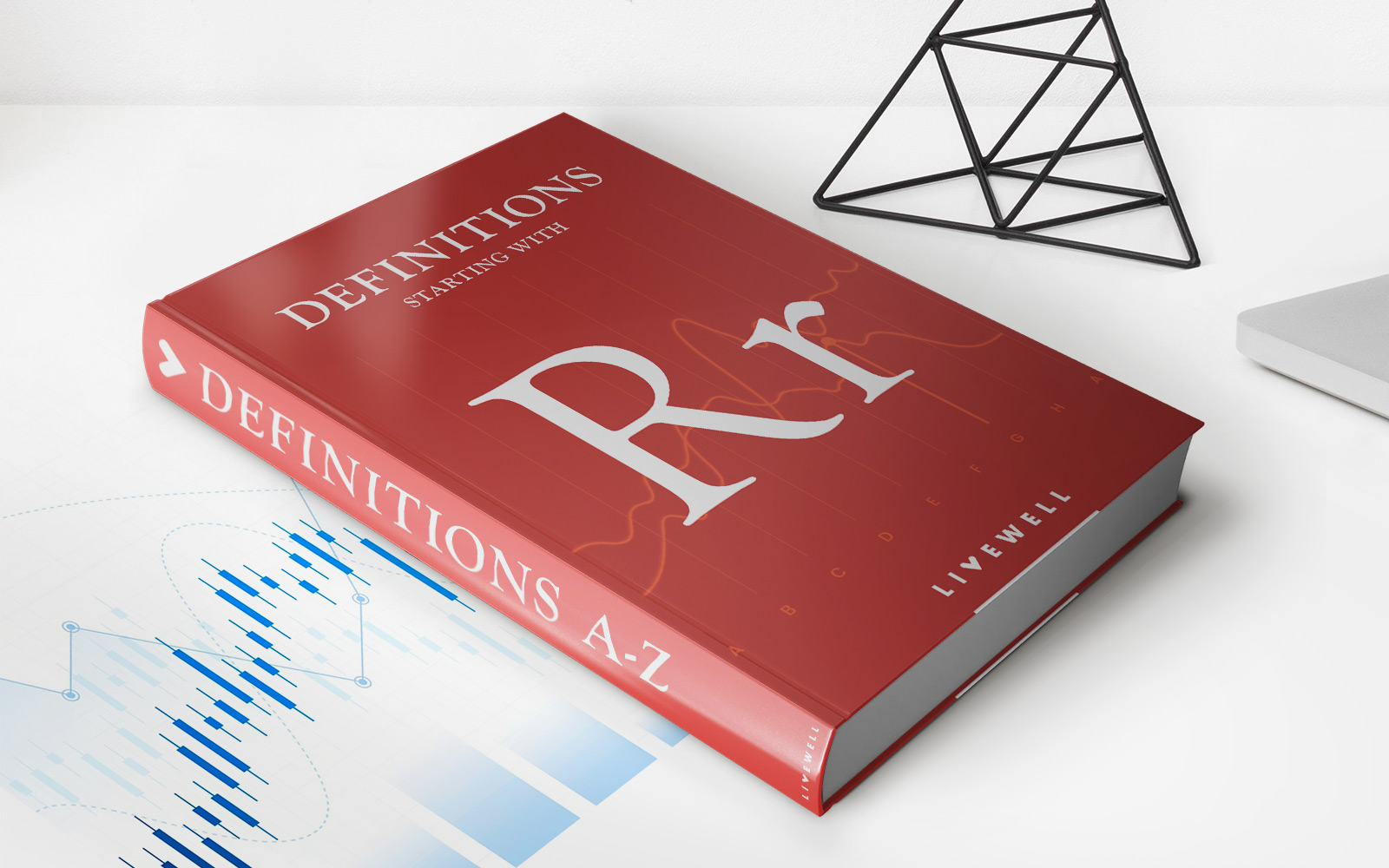

Finance
Why Is My Tax Return So Low In 2022
Modified: February 21, 2024
Discover why your tax return is lower than expected for 2022. Get insights and tips on managing your finances to optimize your tax situation.
(Many of the links in this article redirect to a specific reviewed product. Your purchase of these products through affiliate links helps to generate commission for LiveWell, at no extra cost. Learn more)
Table of Contents
- Introduction
- Changes in Tax Laws
- Impact of Income Changes
- Adjustments to Withholdings
- Deductions and Credits
- Changes to Tax Brackets
- Changes to Tax Rate
- Changes to Taxable Income
- Changes to Standard Deduction
- Changes to Itemized Deductions
- Changes to Child Tax Credit
- Changes to Earned Income Tax Credit
- Changes to Other Tax Credits
- Additional Taxes and Penalties
- Conclusion
Introduction
As you receive your tax return for the year 2022, you may find yourself wondering why it is lower than expected. A lower tax return can be a disappointing surprise, but understanding the reasons behind it can help alleviate some of the frustration. There are several factors that can contribute to a lower tax return, including changes in tax laws, adjustments to withholdings, and alterations to deductions and credits.
It is important to note that tax laws can change from year to year, and this can have a significant impact on the amount of taxes you owe. In 2022, there have been several changes to the tax laws that may have affected your tax return. These changes can include modifications to tax brackets, adjustments to tax rates, changes to taxable income thresholds, and alterations to deductions and credits.
Another reason for a lower tax return may be a change in your income. If your income has decreased compared to previous years, it can result in a lower tax liability and ultimately a lower tax return. Similarly, if you had a year with additional sources of income, such as rental income or capital gains, it can increase your overall tax liability and reduce your tax return.
Adjustments to withholdings can also impact the amount of your tax return. Withholdings are the amount of taxes that are deducted from your paycheck throughout the year. If you have adjusted your withholdings to have less taxes withheld, it can result in a smaller tax return at the end of the year. This can be intentional as individuals may have changed their withholdings to have more money in their paycheck throughout the year rather than waiting for a larger tax return.
Changes in Tax Laws
One of the significant factors that can contribute to a lower tax return in 2022 is the changes in tax laws. The government makes amendments to tax laws to ensure fair and efficient tax collection, and these changes can directly affect the amount of taxes you owe and the resulting tax return.
For the tax year 2022, several notable changes have been implemented that may impact your tax return. These changes include adjustments to tax brackets, modifications to tax rates, alterations to taxable income thresholds, and revisions to deductions and credits.
Firstly, tax brackets determine the percentage of your income that is subject to income tax. In 2022, there may have been changes to the tax brackets, with income ranges being adjusted. This means that if your income falls within a higher tax bracket, you may owe more in taxes, resulting in a lower tax return.
Secondly, adjustments to tax rates can also impact your tax return. Tax rates represent the percentage of your taxable income that is owed in taxes. If there have been changes to the tax rates, such as an increase in rates for higher-income individuals, it can result in a higher tax liability and a lower tax return.
Furthermore, changes to taxable income thresholds can also affect your tax return. Taxable income is the amount of your income that is subject to taxation after subtracting deductions and credits. If there have been modifications to the thresholds, it can impact the calculation of your tax liability, potentially resulting in a lower tax return.
In addition, revisions to deductions and credits can impact your overall tax liability and, consequently, your tax return. Deductions are expenses that can be subtracted from your taxable income, reducing the amount of income that is subject to taxation. Credits, on the other hand, are directly subtracted from your tax liability. If there have been changes to the deductions or credits you are eligible for, it can affect the final amount of taxes you owe and your tax return.
It is essential to stay updated on changes in tax laws and to consult with a tax professional who can help you understand the impact of these changes on your specific tax situation. By being aware of the changes in tax laws, you can better anticipate the potential impact on your tax return.
Impact of Income Changes
Changes in your income can have a significant impact on the amount of taxes you owe and, consequently, your tax return. Whether your income has increased or decreased compared to previous years, it can affect your overall tax liability and the final amount you receive on your tax return.
If your income has decreased in 2022, it can result in a lower tax liability. When you earn less money, you are typically subject to a lower tax rate. This means that a smaller portion of your income is owed in taxes, potentially leading to a lower tax liability. As a result, your tax return may be lower than in previous years.
Conversely, an increase in income can lead to a higher tax liability and a lower tax return. As your income rises, you may find yourself entering higher tax brackets where the tax rates are higher. This means that a larger portion of your income is subject to higher tax rates, resulting in a greater tax liability and a potentially smaller tax return.
It’s important to note that changes in income can come from various sources, such as a raise or promotion at work, starting a new job, or receiving additional income from investments or side businesses. Depending on the type and amount of income you have, it can impact both your tax liability and your tax return.
Moreover, certain types of income may be subject to specific tax rules and regulations. For example, if you receive income from rental properties or capital gains from the sale of investments, it may be taxed differently than regular wages or salary income. Understanding the tax rules associated with different types of income is crucial in accurately calculating your tax liability and estimating your tax return.
It’s essential to review how changes in income may have affected your tax situation. Consider consulting a tax professional who can help you identify the impact of income changes on your tax return. By understanding the relationship between income changes and tax liability, you can better plan for any discrepancies in your tax return.
Adjustments to Withholdings
Withholdings refer to the amount of taxes that are automatically deducted from your paycheck by your employer throughout the year. The purpose of withholdings is to ensure that you are paying your tax liability gradually rather than facing a large tax bill at the end of the year. However, adjustments to your withholdings can affect the amount of taxes withheld and ultimately impact your tax return.
One reason you might experience a lower tax return is if you made adjustments to your withholdings to have less taxes withheld from your paycheck throughout the year. Some individuals prefer to have more money in their paycheck on a regular basis rather than waiting for a larger tax return. While this can provide more financial flexibility throughout the year, it can result in a smaller tax return when tax time arrives.
Conversely, if you made adjustments to your withholdings to have more taxes withheld, it can potentially increase your tax return. This may be the case if you anticipate having additional tax deductions or credits that can offset the higher withholdings. It’s important to carefully consider your financial situation and consult a tax professional when making adjustments to your withholdings.
It’s worth noting that adjusting your withholdings is a personal decision, and there is no right or wrong approach. Some individuals prefer to have a larger tax return as a form of forced savings or to use it for specific financial goals. Others prefer to have more money in their paycheck throughout the year to meet regular expenses or to invest. Evaluating the pros and cons of adjusting your withholdings can help you make an informed decision that aligns with your financial goals.
If you are unsure about the impact of adjusting your withholdings or need guidance on the appropriate number of allowances to claim on your W-4 form, consider consulting with a tax professional. They can provide personalized advice based on your specific financial situation and help you understand the potential impact on your tax return.
Deductions and Credits
Deductions and credits play a crucial role in determining your tax liability and can significantly impact the amount of your tax return. Deductions reduce your taxable income, while credits directly reduce the amount of taxes you owe. Understanding the changes to deductions and credits for the tax year 2022 is essential in comprehending why your tax return may be lower than expected.
Firstly, the standard deduction is an amount that can be subtracted from your taxable income if you choose not to itemize your deductions. This deduction can lower your tax liability and increase your tax return. However, the standard deduction amount can change from year to year due to inflation adjustments. Therefore, if the standard deduction has increased for 2022, you may find that your tax return is lower compared to previous years, as your taxable income will be higher.
On the other hand, if you choose to itemize your deductions, which involves tallying up specific expenses such as mortgage interest, state and local taxes, and medical expenses, changes to the rules governing itemized deductions can impact your tax return. For example, the tax law changes might have modified the eligible expenses for itemization or altered the thresholds for deducting certain expenses. These changes can lead to a lower tax return if your itemized deductions are less than the standard deduction.
Moreover, tax credits can significantly impact your tax return. The Child Tax Credit, for instance, is a credit that can be claimed for each qualifying child, and it can provide a substantial reduction in your tax liability. For the tax year 2022, there have been changes to the Child Tax Credit, including an increase in the maximum credit amount and expanded eligibility criteria. However, if you no longer meet the requirements or if your credit amount has decreased, it can result in a lower tax return.
Other tax credits, such as the Earned Income Tax Credit (EITC) and education-related credits, can also impact your tax return. Changes to the eligibility criteria, income limits, or credit amounts for these credits can affect your overall tax liability. It’s essential to stay informed about any changes to these credits and assess how they may impact your tax return.
Consulting with a tax professional can provide you with a thorough understanding of the deductions and credits that apply to your specific tax situation. They can help you assess the impact of these changes on your tax return and explore potential strategies to maximize your refund.
Changes to Tax Brackets
Tax brackets play a crucial role in determining the amount of taxes you owe and can significantly impact your tax return. A tax bracket is a range of income to which a specific tax rate applies. Any changes to tax brackets can have a direct impact on your tax liability and the amount of your tax return.
For the tax year 2022, there may have been changes to the tax brackets, with income ranges being adjusted. These adjustments are often made to account for inflation and changes in economic conditions. When income ranges are modified, it can result in individuals falling into different tax brackets compared to previous years.
If the income ranges for tax brackets have shifted upward, it means that more individuals may find themselves in higher tax brackets. This can result in a higher tax liability and a potentially lower tax return. Conversely, if the income ranges have shifted downward, more individuals may fall into lower tax brackets, leading to a lower tax liability and a potentially higher tax return.
Understanding the specific tax bracket you fall into is crucial in determining your tax liability. Each tax bracket has a different tax rate assigned to it, and as your income increases, you move into higher tax brackets with higher tax rates. If you find that your income has crossed into a higher tax bracket due to changes in the brackets themselves, it can lead to a higher overall tax liability.
It’s important to note that changes to tax brackets can also impact the marginal tax rate. The marginal tax rate is the rate at which your last dollar of income is taxed. If changes to the tax brackets have resulted in a higher marginal tax rate, it means that each additional dollar you earn will be subject to a greater percentage of taxes.
To assess the impact of changes to tax brackets on your tax return, it’s recommended to review your income and determine which tax bracket you fall into. If you notice any significant shifts or changes in your tax bracket, it is wise to consult with a tax professional who can provide guidance on how these changes may affect your overall tax liability and the resulting tax return.
Changes to Tax Rate
The tax rate is the percentage of your taxable income that you owe in taxes, and any adjustments to the tax rate can have a significant impact on your tax liability and ultimately your tax return. Changes to tax rates can be influenced by various factors, such as economic conditions, government policies, and societal needs.
For the tax year 2022, there may have been changes to the tax rates, which can affect the amount of taxes you owe and the resulting tax return. An increase in tax rates means that a larger portion of your income is subject to higher tax rates, leading to a higher overall tax liability. As a result, your tax return may be lower compared to previous years.
Conversely, a decrease in tax rates can lower your tax liability and potentially increase your tax return. If tax rates have been reduced for certain income ranges, a smaller percentage of your income is owed in taxes, leaving you with more money in your pocket and potentially a larger tax return.
It’s important to keep in mind that tax rates can vary based on different income levels. In most progressive tax systems, higher-income individuals are subject to higher tax rates, while lower-income individuals are subject to lower tax rates. Changes to tax rates can have a more significant impact on individuals in higher income brackets, as they face higher tax rates on a larger portion of their income.
Additionally, changes to the tax rate can also affect your marginal tax rate. The marginal tax rate is the rate at which your last dollar of income is taxed. If changes to the tax rates have resulted in a higher marginal tax rate, it means that each additional dollar you earn will be subject to a greater percentage of taxes.
Understanding the changes to tax rates is crucial in accurately estimating your tax liability and planning for your tax return. It’s recommended to review the tax rate schedules for the tax year 2022 and determine the impact on your specific income level. If you have any concerns or need assistance, consider consulting with a tax professional who can provide guidance tailored to your unique financial situation.
Changes to Taxable Income
Taxable income is the portion of your income that is subject to taxation after deductions and adjustments. Any changes to taxable income thresholds or adjustments can have a significant impact on your tax liability and ultimately affect the amount of your tax return.
For the tax year 2022, there may have been changes to the thresholds or adjustments that determine what portion of your income is considered taxable. These changes can be influenced by inflation, economic conditions, and government policies. If the taxable income thresholds have been adjusted upward, it means that a larger portion of your income may be subject to taxation, potentially increasing your tax liability and resulting in a lower tax return.
On the other hand, changes to taxable income thresholds can also benefit taxpayers. If the thresholds have been adjusted downward, it means that a smaller portion of your income may be subject to taxation. This can reduce your overall tax liability and potentially result in a higher tax return.
Moreover, changes in the tax code can also alter what types of income are considered taxable. Certain types of income, such as capital gains or dividends, may be subject to different tax rates or have specific rules for taxation. Understanding how these changes impact your taxable income is vital in accurately calculating your tax liability and estimating your tax return.
It’s important to note that taxable income can be reduced through various deductions and adjustments. Deductions, such as those for mortgage interest, student loan interest, and medical expenses, can lower your taxable income by subtracting eligible expenses. Adjustments, such as those for contributions to retirement accounts or self-employment expenses, can also reduce your taxable income. Changes in the tax law may affect the availability or limitations of these deductions and adjustments.
To accurately estimate the impact of changes to taxable income on your tax return, it’s recommended to review your specific income sources, deductions, and adjustments. Understanding the changes in thresholds or adjustments and how they affect your taxable income will help you better anticipate your tax liability and plan for any potential changes in your tax return.
Changes to Standard Deduction
The standard deduction is a set amount that can be subtracted from your taxable income, reducing your overall tax liability. Any changes to the standard deduction can have a significant impact on your tax return, as it directly affects the amount of income that is subject to taxation.
For the tax year 2022, there may have been changes to the standard deduction amount. The standard deduction can be adjusted each year to account for inflation and changes in the cost of living. If the standard deduction has increased for 2022, it means that a larger amount can be deducted from your taxable income, potentially lowering your overall tax liability.
Conversely, if the standard deduction has decreased or remained the same, it means that a smaller amount can be deducted from your taxable income. This can result in a higher tax liability and potentially a lower tax return compared to previous years.
It’s important to note that the standard deduction is an alternative to itemizing deductions. When you file your taxes, you can choose to either take the standard deduction or itemize deductions, such as expenses for mortgage interest, state and local taxes, and medical expenses.
If the standard deduction has increased significantly, it may make more financial sense for individuals to take the standard deduction rather than itemize deductions. This is because the standard deduction is a fixed amount that can often provide a higher deduction compared to itemizing, especially for individuals with fewer eligible expenses.
However, if the standard deduction has decreased or if you have significant itemized deductions that exceed the standard deduction amount, it may be more advantageous to itemize deductions on your tax return. By itemizing deductions, you can potentially lower your taxable income even further, resulting in a lower tax liability and potentially a higher tax return.
It’s important to stay updated on changes to the standard deduction and regularly evaluate whether it is more beneficial for you to take the standard deduction or itemize deductions. Consulting with a tax professional can provide personalized advice based on your specific financial situation and help you determine the most advantageous approach for maximizing your tax return.
Changes to Itemized Deductions
Itemized deductions allow taxpayers to deduct specific expenses from their taxable income, potentially reducing their overall tax liability. Any changes to the rules governing itemized deductions can have a significant impact on your tax return, as they directly affect the amount of eligible expenses that can be deducted.
For the tax year 2022, there may have been changes to itemized deductions, including modifications to the eligible expenses, adjustments to deduction thresholds, or revisions to the limitations on certain deductions.
Changes to eligible expenses can restrict or expand the types of expenses that can be considered for itemized deductions. For example, certain deductions such as mortgage interest, state and local taxes, and medical expenses may have undergone changes in terms of what is eligible or the maximum amount that can be deducted. This can directly impact the amount of your itemized deductions and consequently your overall tax liability.
Additionally, changes to deduction thresholds can affect the deductibility of specific expenses. Deductions often have requirements regarding the minimum threshold that must be exceeded before they can be claimed. If the threshold for a particular deduction has been raised, it may be more challenging to qualify for that deduction, potentially resulting in a higher tax liability and a lower tax return compared to previous years.
Limits on specific deductions can also be altered, either by increasing or decreasing the cap on the amount that can be deducted. For example, there may be changes to the maximum amount of state and local tax deductions or the cap on certain miscellaneous deductions. These changes can impact the amount of deductions you can claim and may affect your overall tax liability and tax return.
It’s important to stay informed about any changes to itemized deductions and regularly review your eligible expenses. Keeping track of your deductible expenses throughout the year and ensuring that you have proper documentation can help maximize your itemized deductions and potentially increase your tax return.
Consider consulting with a tax professional who can guide you through changes in itemized deductions and help you assess the impact on your specific tax situation. They can provide tailored advice and ensure that you are taking full advantage of available deductions while staying compliant with the latest tax regulations.
Changes to Child Tax Credit
The Child Tax Credit is a tax benefit designed to provide financial support to families with dependent children. It directly reduces the amount of taxes owed, and any changes to the Child Tax Credit can have a significant impact on both your tax liability and the amount of your tax return.
For the tax year 2022, there have been changes to the Child Tax Credit that may affect your tax return. These changes include an increase in the maximum credit amount and expanded eligibility criteria.
Prior to the changes, the maximum amount of the Child Tax Credit was $2,000 per qualifying child. However, for 2022, the maximum credit amount has been raised to $3,000 per qualifying child, with an additional $600 credit available for children under the age of six. This increase in the credit amount can significantly lower your tax liability and potentially result in a higher tax return.
In addition to the increased credit amount, the eligibility criteria for the Child Tax Credit have also been expanded. Previously, the credit began to phase out for higher-income households. However, the income thresholds have been adjusted, allowing more families with higher incomes to be eligible for at least a partial credit, if not the full amount. This expansion of eligibility can benefit families who previously did not qualify for the Child Tax Credit, potentially resulting in a higher tax return for these individuals.
It’s important to note that the changes to the Child Tax Credit are temporary and are currently set to expire after the tax year 2025. After that point, the credit amount and eligibility criteria may revert to previous levels unless there are legislative changes.
To ensure you receive the appropriate Child Tax Credit, it’s essential to understand the requirements and eligibility criteria. The credit is typically available for children who are under the age of 17 and meet certain relationship and residency tests. It’s advisable to review the IRS guidelines or consult with a tax professional to determine if you meet the criteria for claiming the credit.
Take advantage of the Child Tax Credit changes for the tax year 2022, as it can significantly reduce your tax liability and potentially increase your tax return. Ensure that you accurately include the necessary information when filing your taxes to claim the credit and maximize its benefits for your family.
Changes to Earned Income Tax Credit
The Earned Income Tax Credit (EITC) is a valuable tax benefit that provides assistance to low- to moderate-income individuals and families. Changes to the EITC can have a significant impact on your tax liability and the amount of your tax return, especially if you meet the eligibility criteria.
For the tax year 2022, there may have been changes to the Earned Income Tax Credit that can affect your tax return. These changes can include adjustments to income thresholds, increases in the credit amounts, or expansions in eligibility.
The income thresholds determine who is eligible for the EITC. If the thresholds have been adjusted upward, it means that more individuals or families may qualify for the credit. This can result in a lower tax liability and a potentially higher tax return for those who meet the eligibility criteria.
Changes to the credit amounts can also impact the EITC for eligible individuals. The credit amounts are based on factors such as income and the number of qualifying children. If the credit amounts have increased for the tax year 2022, it means that eligible individuals may be able to claim a larger credit, reducing their overall tax liability and potentially increasing their tax return.
Furthermore, expansions to eligibility criteria can broaden the scope of individuals who can qualify for the EITC. These changes may include adjustments to age requirements, residency criteria, or rules regarding filing status. If these expansions allow more individuals to qualify for the EITC, it can result in a lower tax liability and a potentially higher tax return for those who previously did not meet the eligibility criteria.
It is important to review the specific requirements and income thresholds for the Earned Income Tax Credit to determine if you qualify. The eligibility criteria may vary depending on factors such as your filing status, income level, and the number of qualifying children.
If you believe you may be eligible for the EITC, it is essential to accurately calculate the credit amount and include the necessary information when filing your taxes. Be sure to consult the EITC guidelines provided by the IRS or seek assistance from a tax professional to ensure that you claim the correct amount and maximize the benefits of this valuable tax credit.
Changes to Other Tax Credits
In addition to the Child Tax Credit and the Earned Income Tax Credit, there are various other tax credits that can impact your tax return. These credits provide valuable opportunities to lower your tax liability, and any changes to them can have a significant effect on the amount of your tax return.
For the tax year 2022, there may have been changes to other tax credits, such as education-related credits, energy-efficient home improvement credits, or credits for dependent care expenses. These changes can include adjustments to eligibility criteria, changes in credit amounts, or modifications to the maximum amount of the credit that can be claimed.
Education-related credits, such as the American Opportunity Credit or the Lifetime Learning Credit, can help offset the costs of tuition and education expenses. Changes to these credits might include modifications to income limits, adjustments to allowable expenses, or changes in the maximum credit amounts. Understanding these changes is essential in accurately calculating your tax liability and determining your tax return.
Energy-efficient home improvement credits aim to incentivize homeowners to make eco-friendly upgrades to their homes. These credits may cover expenses for items like energy-efficient windows, solar panels, or efficient heating and cooling systems. Changes to these credits may include alterations to eligible expenses, adjustments to credit amounts, or modifications to income limits for claiming the credit.
Credits for dependent care expenses can provide assistance to individuals who incur costs for child care or care for a disabled dependent. Changes to these credits might involve adjustments to income limits, modifications to allowable expenses, or changes in credit amounts. Understanding these changes is vital in accurately calculating your tax liability and estimating your tax return.
It is important to stay informed about any changes to these tax credits and determine if you qualify based on the updated criteria. Reviewing the specific requirements for each credit and keeping track of eligible expenses throughout the year can help maximize your tax benefits and potentially increase your tax return.
Consulting with a tax professional can provide personalized advice and guidance on how changes to other tax credits may impact your tax return. They can help ensure that you are eligible for the credits, accurately claim them on your tax return, and maximize your tax benefits.
Additional Taxes and Penalties
In addition to changes in tax laws, deductions, and credits, it’s important to consider any potential additional taxes and penalties that can impact your tax return. These additional taxes and penalties can arise from various circumstances and can significantly affect your overall tax liability and the amount of your tax return.
One common example of an additional tax is the Alternative Minimum Tax (AMT). The AMT is a parallel tax system with its own set of rules and rates that are designed to ensure individuals with high incomes or substantial deductions still pay a minimum amount of taxes. If you are subject to the AMT, it can increase your overall tax liability and potentially reduce your tax return.
Penalties can also be imposed for certain tax-related violations. For instance, if you underpay your taxes throughout the year or fail to make estimated tax payments, you may be subject to penalties for underpayment of estimated taxes. Similarly, if you fail to file your tax return by the deadline or fail to pay the taxes you owe, penalties and interest charges may be imposed by the IRS.
Other situations that can result in additional taxes and penalties include tax fraud or negligence, engaging in certain abusive tax shelters, and failing to report foreign financial assets. It’s crucial to comply with tax regulations and report all income and deductions accurately to avoid any potential penalties or complications that can arise from noncompliance.
It’s important to carefully review your tax return and consult with a tax professional to ensure that you have properly accounted for any additional taxes or penalties that may apply to your specific tax situation. Understanding the rules and regulations related to these additional taxes and penalties can help you avoid unexpected surprises and accurately estimate your tax liability and potential tax return.
By staying informed, being proactive in fulfilling your tax obligations, and seeking guidance when needed, you can minimize the impact of additional taxes and penalties and maintain compliance with tax regulations.
Conclusion
As you review your tax return for the year 2022, it’s crucial to understand the factors that may have contributed to a lower-than-expected tax return. Changes in tax laws, adjustments to withholdings, alterations to deductions and credits, changes to tax brackets and rates, modifications to taxable income thresholds, and adjustments to the standard deduction and itemized deductions can all impact your tax liability and the amount of your tax return.
Staying informed about changes in tax laws and seeking guidance from a tax professional can help you navigate the complexities of the tax system and make informed decisions. It’s important to review the specific changes to tax laws and credits, consider any adjustments to your withholdings, and ensure that you are accurately claiming all eligible deductions and credits to maximize your tax benefits.
Remember that each individual’s tax situation is unique, and what may be applicable to others may not necessarily apply to you. Consulting with a tax professional who can provide personalized advice based on your specific financial circumstances is always recommended.
Lastly, it’s important to note that while a lower tax return may be disappointing, it’s essential to focus on the bigger picture. Rather than solely relying on a tax return for financial stability or planning, consider adjusting your financial strategy to ensure a more balanced approach throughout the year. This can involve setting aside savings, managing your expenses effectively, and exploring other investment opportunities that can help you achieve your financial goals.
Understanding the reasons behind a lower tax return can help you plan ahead and make necessary adjustments for future tax years. By staying informed, seeking professional advice when needed, and taking proactive steps to manage your finances, you can optimize your tax situation and work towards a more favorable tax return in the future.














